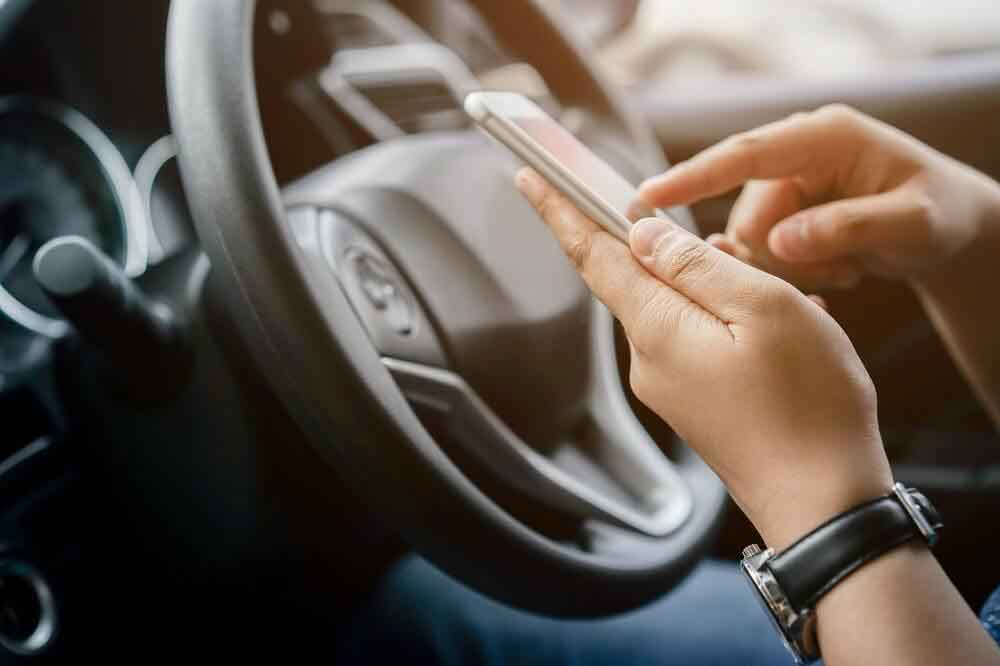Drivers not getting phone danger message

Looking at a phone screen for two seconds or more makes drivers four times more likely to have a crash, new research has revealed.
A study commissioned by the Australian Automobile Association (AAA) found while the vast majority of drivers were trying to reduce their phone use, there was a big gap between what they thought worked and what they actually did.
The study found very few people turned off their phones when driving, despite most thinking it was an effective way to reduce their use.
Researchers interviewed 30 young drivers and did two online surveys, receiving responses from almost 1300 participants across Australia and New Zealand.
They also surveyed 32 international road safety experts in 13 countries working in universities, the government, public and not-for-profit sectors.
AAA Research Manager Dr Kate O’Donnell said the new research shed light on the complex interplay of factors that influence how, when and why we use our smartphones in different driving scenarios.
The study also reveals how distracted driving compares with other risky driving behaviours such as driving while tired or affected by alcohol.
"This is one of the first studies to look at all the new ways we are using our phones while driving, beyond just calling and texting, and the factors that significantly influence that use," Dr O’Donnell said.
"It’s not as simple as calling it 'phone addiction' and the solution is not going to be as simple as telling people to just put their phones away."
Causes of distraction
For young drivers, the highest level of engagement was with entertainment apps, such as music and podcasts, and most types of phone use increased markedly when drivers were in stop-start traffic or stopped at traffic lights.
Dr O’Donnell said well-established calling and texting apps were the most common ways more experienced drivers took risks with their phone.
"But the social media trap seems to capture both younger and experienced drivers, who engage with those apps at similar rates when they grab their phones," she said.
"Interestingly, experienced drivers report a slightly higher use of social media in all types of traffic conditions – this is not just a younger person problem."
The AAA, the national body that represents RACQ, has applied the research to create a resource designed to break the nexus between young drivers’ motivations to use their smartphones while driving, and their actual use.
Drive In The Moment is a new, online platform with a "risk rater" tool that demonstrates the risk of smartphone distraction when compared with other risky behaviours.
Tool to help
You can then try the "plan builder" tool, which prompts you to build a bespoke guide to reduce smartphone use by helping to identify the various ways and moments in which you are tempted to use a phone.
The tool will then ask you to develop a tailored "mental plan" of how to better respond, manage relapses and re-enforce positive behaviour.
"The good news is we can see from the research people are trying to reduce their use, and we hope this new approach is one way that can help those who want to change their behaviour," Dro O’Donnell said.
"We want Australians to aspire to be better, safer drivers, who take less risks on the road. Have a plan, ditch the distractions, and drive in the moment."
The distracted driving research was commissioned by the Australian Automobile Association in partnership with the New Zealand Automobile Association, using grant funding from the Federation Internationale de L'Automobile, and conducted by the Queensland University of Technology (CARRS-Q).
Related topics
Things to note
The information in this article has been prepared for general information purposes only and is not intended as legal advice or specific advice to any particular person. Any advice contained in the document is general advice, not intended as legal advice or professional advice and does not take into account any person’s particular circumstances. Before acting on anything based on this advice you should consider its appropriateness to you, having regard to your objectives and needs.
Insurance Products (excluding Travel Insurance) are issued by RACQ Insurance Limited ABN 50 009 704 152 (RACQI) and arranged by its agent, RACQ Distribution Services Pty Ltd (RDS) ABN 35 116 361 650, AFSL 567130 and RDS' authorised representatives (including RACQ Operations Pty Ltd ABN 80 009 663 414, AR No. 234978 (RACQO). Conditions, limits and exclusions apply. RDS and RACQO are in the RACQ group of companies. One of the companies in the RACQ group of companies has a minority shareholding in RACQI.
RDS and RACQO have not taken your personal objectives, circumstances or needs into account when preparing advice regarding insurance products and you will need to consider whether the advice is appropriate for you. Read the Product Disclosure Statement (PDS) and any applicable Supplementary PDS before making a purchase decision on this product. You can also access our Target Market Determinations on this website. RDS receives a commission from RACQI for the policies it arranges. RACQO receives fees paid for services it provides to RDS. Further details about remuneration are available on request prior to purchasing.
Banking and loan products issued by Members Banking Group Limited ABN 83 087 651 054 AFSL/Australian credit licence 241195 trading as RACQ Bank. Terms, conditions, fees, charges and lending policies apply. This is general advice only and may not be right for you. This information does not take your personal objectives, circumstances or needs into account. Read the disclosure documents for your selected product or service, including the Financial Services Guide and the Terms and Conditions, and consider if appropriate for you before deciding.
Except for RACQ Bank, any RACQ entity referred to on this page is not an authorised deposit-taking institution for the purposes of the Banking Act 1959 (Cth). That entity’s obligations do not represent deposits or other liabilities of RACQ Bank. RACQ Bank does not guarantee or otherwise provide assurance in respect of the obligations of that entity, unless noted otherwise.
RACQ Bank subscribes to the Customer Owned Banking Code of Practice which establishes higher standards than the law requires. The Code reflects modern consumer expectations and developments in approaches to issues such as consumer vulnerability, guarantors, and supporting customers through financial hardship. Please read our Customer Owned Banking Code of Practice page for more information.
RACQ Operations Pty Ltd (ABN 80 009 663 414 AR 000234978) and Members Travel Group Pty Ltd (ABN 45 144 538 803 AR 000432492) are acting as an Authorised Representative of the issuer of the insurance, Tokio Marine & Nichido Fire Insurance Co., Ltd. (ABN 80 000 438 291 AFSL 246 548). Any advice set out above is general in nature only, and does not take into account your objectives, financial situation or needs. Before purchasing any travel products, please consider the RACQ Travel Insurance Product Disclosure Statement (PDS) and the Target Market Determinations (TMDs) that apply to these products. Whilst the PDS outlines the Terms and Conditions of these products, the TMDs outline the intended class of customers that comprise the target market for these travel products. This will allow you to consider which products best suit your objectives, financial situation and needs and consider the products appropriateness to your personal circumstances. TMDs also outline matters involving the distribution and the review of these products. The PDS, Supplementary PDS and TMDs for each travel product can be found here.
